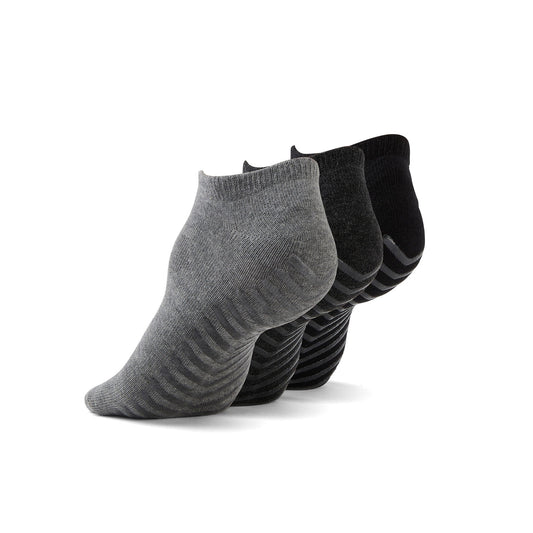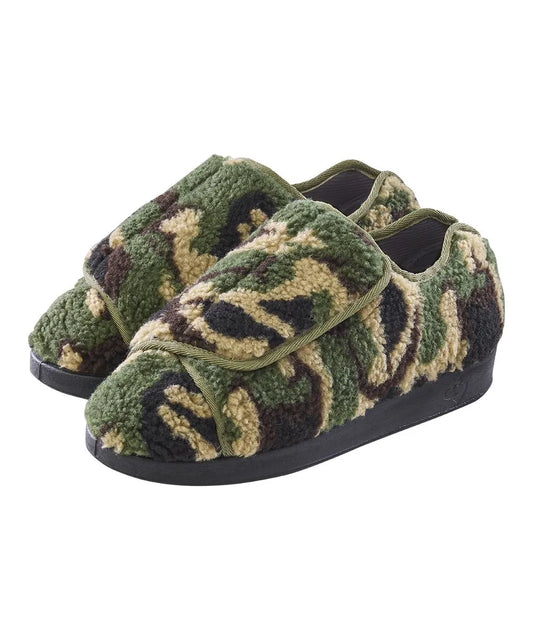Written & Reviewed by Alisa Matsushita-Bomba
As a caregiver, it is important to know terms related to healthcare and caregiving. Being familiar with the terminology allows you to communicate with healthcare workers more effectively and access resources and support. Knowing these terms can make you provide better care for your loved one.
Here are 44 terms every caregiver should know:
- ADRD (Alzheimer’s Disease or Related Disorders): This acronym serves as a reminder of the uncertainty surrounding an Alzheimer's diagnosis among medical experts. The more inclusive idea of ADRD is, in some instances, a more accurate description because the disease is comparable to other signs of aging.
- Adaptive clothing: Clothing designed to make it easier for people with disabilities or who need help getting dressed using special features like snap closures and zippers. June Adaptive has great options, including clothing for easy dressing, like this Women's Ponte Long Sleeve Open Back Dress, assisted dressing, like this Men's Nightgown with a Back Overlap and seated fashion (for those in wheelchairs), like these Men's Seated Fleece Pants with a Back Overlap.
- Activities of Daily Living (ADLs): Basic self-care tasks, including bathing, dressing, toileting, transferring, and eating.
- Acute care: Medical care given for a short time to treat a specific illness or condition. This can include doctor visits, short hospital stays, or surgery.
- Adult care home, also called an adult family-care home (AFCH) or group home: A small assisted living facility where staff members care for seniors or disabled adults who require support with specific activities but want to maintain their independence. They serve as an option to less flexible institutional settings, like nursing homes that offer round-the-clock nursing care.
- Adult day care: Institutions that offer assistance and companionship to senior citizens who require daytime monitoring. A 24-hour carer may benefit from a break thanks to the initiatives.
- Aging in place: The practice of spending one's mature years at home. Moving into assisted living, a retirement community, or a nursing facility is the opposite of aging in place.
- Alzheimer's disease: A type of progressive mental decline that affects memory and the capacity for thought processing. Check out this blog post to learn more.
- Assisted living facility (ALF): Accommodations for people who might need assistance with independent living but do not require skilled nursing care. The degree of assistance can range from help with bathing and dressing to assist with meals and housekeeping, depending on the location.
- Assistive technology devices: Products that increase a person's capacity for independent living and functioning. Canes and pill organizers are examples of low-tech assistive equipment; motorized wheelchairs, hearing aids, and cell phones are examples of high-tech equipment.
- Behavioural Supports Ontario (BSO): An program sponsored by the provincial Ministry of Health and Long-Term Care that seeks to inform and assist the families of older people in Ontario who may be displaying altered behaviour linked to dementia or other mental health disorders.
- Chronic disease: A condition that lasts one year or more and either requires ongoing medical attention or limits a person's ability to bathe, care for themselves, dress, eat, or walk.
- Cohousing: A small planned community with single-family homes, townhouses, or rental properties grouped around shared facilities like a kitchen and eating area, common sitting areas, meeting rooms, gardens, and possibly adult and child daycare centres. The objective is to plan a community where residents of all ages and family situations can depend on informal, reciprocal assistance from their neighbours.
- Comorbidity: The existence of multiple disorders in the same individual. They could occur simultaneously or one after the other. The progression of both diseases can be made worse by interactions between them.
- Competence: In a legal sense, a person's ability to understand information, make a choice based on that information, and understandably communicate that decision.
- Custodial care: Non-medical care that assists patients with washing, dressing, and other necessary daily tasks that most people can perform on their own. It can happen in a variety of settings, including residential care facilities, assisted living facilities, and senior day care centres.
- Dementia: A progressive neurological disorder that affects memory, thinking, and behaviour. Check out this blog post to learn more about dementia.
- Disability Tax Credit (DTC): An available tax benefit from the Canada Revenue Agency that is non-refundable. Few people are aware that among the disabilities covered are a number that pertains to activities of daily living (ADLs), like dressing and eating.
- Discharge planner: A professional who assists patients and their families in developing a method of care for a patient following a hospital or nursing home stay.
- Do not resuscitate (DNR) order: A type of advance directive that instructs medical professionals not to use cardiopulmonary resuscitation if a patient's pulse or breathing stops.
- End-of-life doula: Also known as a death doula, it is a person who offers non-medical comfort and assistance to someone who is dying and their family. This may include counselling, instruction, and support on a psychological, spiritual, or functional level.
- Extended care: Short-term or temporary care in a rehabilitation hospital or nursing home with the goal of returning a patient home.
- Geriatric care manager/aging life care professional: A specialist who develops a care plan to help with organizing housing, medical, social, and other services after evaluating a person's mental, physical, environmental, and financial conditions.
- Geriatrician: A medical professional who specializes in older adults and has finished a residency in either internal medicine or family medicine.
- Healthcare Proxy: A kind of durable power of attorney in which a person names a replacement to make healthcare choices on their behalf in the event that they are unable to do so themselves.
- Home Accessibility Tax Credit (HATC): A tax benefit that is non-refundable and offered by the Canada Revenue Agency. The HATC can be used to cover costs associated with remodeling a home to accommodate the requirements of a person with disabilities, including elderly people.
- Home Health Care: Licensed healthcare professionals providing both medical and non-medical care in the patient's residence.
- Hospice Care: End-of-life care provided to individuals with terminal illnesses, focused on pain and symptom management and emotional support.
- Informed consent: The procedure of deciding on medical treatment or medical research after consulting with the patient, the patient's family, and the healthcare practitioner openly and honestly.
- Instrumental Activities of Daily Living (IADLs): More complex activities that are necessary for independent living like managing finances, grocery shopping, and transportation.
- Medical Expense Tax Credit (METC): Tax break available from the Canada Revenue Association, applicable to anyone whose medical costs total more than 3% of their total income. Seniors and carers can benefit the most from this credit by following a specific spending plan.
- Medication Management: the process of making sure a person takes their medications as directed by their doctor, which includes organizing medications, giving them at the appropriate time, and keeping an eye out for adverse effects.
- Mild Cognitive Impairment (MCI): A general term for a variety of mental health issues that frequently have an impact on memory but do not have a single source or effect. It might make Alzheimer's more likely.
- Palliative care: Specialized medical attention that aims to relieve the signs and stress of a severe illness. The objective is to enhance the patient's and the family's standard of life. Palliative care can coexist with treatments to stop or cure a disease, unlike hospice care, which is usually provided to patients who are nearing the end of their lives and have terminal illnesses.
- Parkinson's Disease: A degenerative condition of the central nervous system (CNS) characterized by shaking, rigidity, and trouble walking in the affected person. With a typical post-diagnosis life expectancy of 7 to 14 years, it is a terminal illness.
- Personal Support Worker (PSW): Someone who looks after the physical, mental, and emotional well-being of a patient who is not able to do so themselves. Other synonymous variations include Home Support Worker, Personal Attendant, Visiting Homemaker, Supportive Care Assistant, and Patient Services Associate.
- Power of Attorney (POA): A legal document that grants someone you trust the power to decide on your financial or medical treatment.
- Primary care physician (PCP): The medical professional you visit primarily for exams and health issues. These medical experts occasionally have general family practices, while others focus on internal medicine for adults or pediatrics for kids.
- Registered Nurses (RN) and Registered Practical Nurses (RPNs): Healthcare professionals who are qualified to provide treatments in the patient's house. While RNs and RPNs study from the same body of nursing knowledge, RNs study for a longer period of time, allowing for a greater depth and range of foundational knowledge.
- Remote patient monitoring (RPM): A subgroup of telehealth services that enable patients to use mobile medical equipment and technology to collect and send to healthcare experts patient-generated health data like weight, blood pressure, and heart rate.
- Respite care: A few hours, days, or weeks of short-term or temporary care given to an elderly individual or a person with disabilities to relieve the primary caregiver.
- Responsive behaviours: A softer way of describing or comprehending the negative behaviours linked to dementia, like asking the same question repeatedly, wandering, and tantrums. These behaviours, which are shared by many people with the same illnesses, are primarily caused by brain changes that cause memory loss, loss of judgement, mood swings, etc. Although carers may have a tendency to label these "challenging behaviours," the term "responsive behaviours" focuses on the patient's viewpoint rather than the effects of the dementia patient's behaviour.
- Sundown syndrome or sundowning: A state of confusion that lasts into the evening and later in the day. It involves a variety of behaviours including increased confusion, anxiety, agitation, and sleeplessness and is most frequently observed in patients with dementia or Alzheimer's disease.
- Vital signs: A person's heart rate (or pulse), breathing rate, body temperature, and blood pressure. They demonstrate to physicians how well a person's body is operating.















